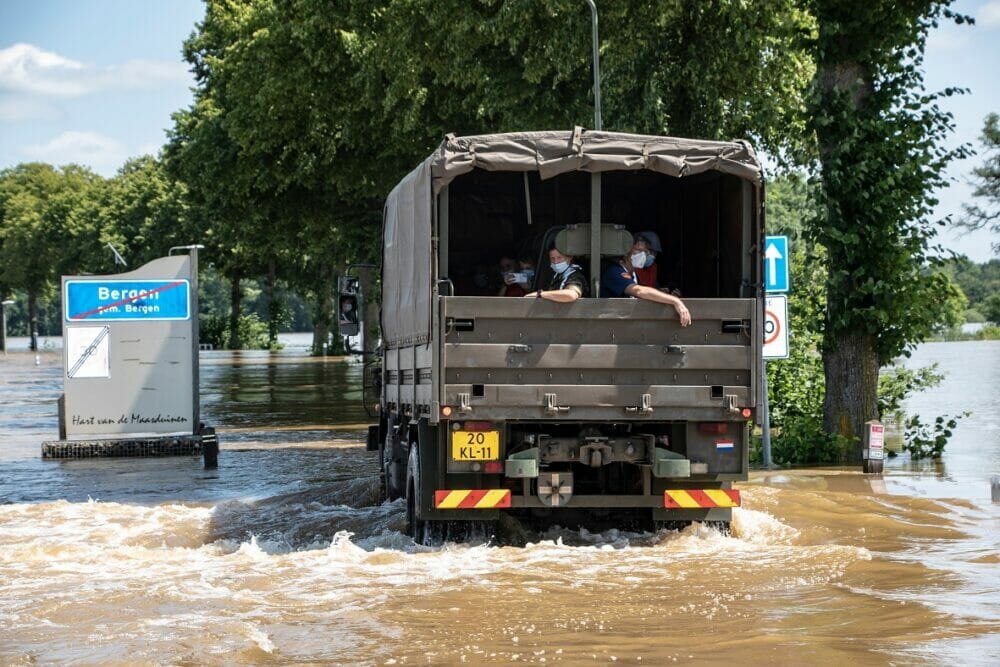~ How environmental threats create challenges for military vehicle design ~
The defence industry is beginning to invest a lot more energy into considering the implications of a world where extreme weather events are increasingly common. Here, Roger Brereton, head of sales at steering system manufacturer Pailton Engineering, looks at two key areas where military vehicle design is likely to respond to the challenge of climate change.
Recent years have witnessed a growth in extreme weather events. Furthermore, according to the most recent report from the Intergovernmental Panel on Climate Change (IPCC), scientists now have increasing confidence of a link between human activity and extreme weather events. Military thinking on climate change has evolved as awareness of the threat has grown. Traditionally, security analysts focused only on relationships among states. Nowadays, the United Nations Security Council recognises climate change as a ‘‘threat multiplier’’ and most Western states accept this approach.
The design of military equipment will need to evolve in line with the latest strategic thinking on climate change. The military will face pressure to lower its carbon footprint and move toward hybrid vehicles and alternative fuels where possible, but it will also need to procure equipment, including military vehicles, that are adapted for a world where climactic conditions have changed. Here are two key areas where military vehicle design will change in response to climate change.
Climate resilience
The idea that extreme weather conditions can impact the performance of military equipment is nothing new. In the conflict in Afghanistan, there were several examples of military hardware struggling to cope with the intense heat, from helicopters to military vehicles.
What is new is a recognition that as a result of climate change, the military will have to plan for a world where harsher climates and extreme temperatures are increasingly common. A recent report by the RAND Corporation, commissioned by the UK Ministry of Defence, noted the need for climate-resilient equipment in response to the growing threat of climate change. Among the report’s recommendations was the proposal that defence acquisition bodies mandate the inclusion of climate-resistant design features in the future.
Climate-resilient vehicle design is being advocated not simply to respond to a more threatening environment, but also to take advantage of new strategic opportunities. For example, rising temperatures are making the Artic region more accessible and leading to its emergence as a new area of strategic focus. Vehicles equipped to deal with this extreme environment, such as the Oshkosh Cold Weather All-Terrain Vehicle (CATV), will see increasing demand. The components that are developed for these vehicles must also undergo more extensive testing to ensure they can endure increased demands.
Disaster relief
The growing frequency of extreme weather events will also likely see the military deployed in response to environmental disasters, both domestically and overseas. While extreme weather might have historically been seen as outside the remit of military actors, policy-makers are now conceptualising extreme-weather events as threats to security and military assistance is being increasingly required as part of humanitarian assistance and disaster relief.
For example, in response to Typhoon Haiyan in 2013, one of the most powerful tropical cyclones ever recorded, the UK deployed two Royal Navy ships, eleven military aircraft and a total of eighteen different vehicles as part of a DFID-led response. However, it is not only in tropical regions that the need to respond to extreme weather is growing.
In July 2021, flooding in Europe led to 243 deaths and over 200,000 properties were left without power. The consensus among the majority of scientists is that events like these are linked to climate change, so military planners are gearing up for a world where increased flooding is something the military will be required to respond to. For example, in the RAND study cited above, flooding is referred to as one of the major threats facing the UK in the next few years. In the US, the procurement of military vehicles to assist with disaster relief is already more advanced.
Given the kind of climate-related disasters that Western countries will have to respond to, vehicles that can offer the flexibility to perform multiple roles will be especially valuable. Whereas currently we are seeing military vehicles re-purposed to deal with domestic extreme weather events like hurricanes and flooding in the future military vehicles will likely be designed from the outset to face this multi-purpose role. For example, components like the bevel box will require the highest levels of ingress protection to ensure the vehicle is fit for driving through flood water.
The threat of climate change is high on the agenda of military planners and has implications at the strategic, tactical and operational level. While the important goal of decarbonisation will take precedence for many, the military also needs to ensure the next generation of vehicles are adapted to an environment where extreme temperatures and climate-related disasters are unfortunately more common.
Military vehicle design is likely to reflect this imperative, with vehicles that are engineered for inhospitable climactic conditions, and designed for disaster relief as well as more traditional military tasks. Working with a parts supplier like Pailton Engineering will ensure that your vehicle’s components are designed and tested for the harshest environments and can provide the climate-resilience that will be essential in the battlefields of the future.
Pailton Engineering is a specialist mid-volume manufacturer of steering parts and full steering systems. To find out more about the company’s design capabilities, visit pailton.com or call +44 (0) 2476 680445.








